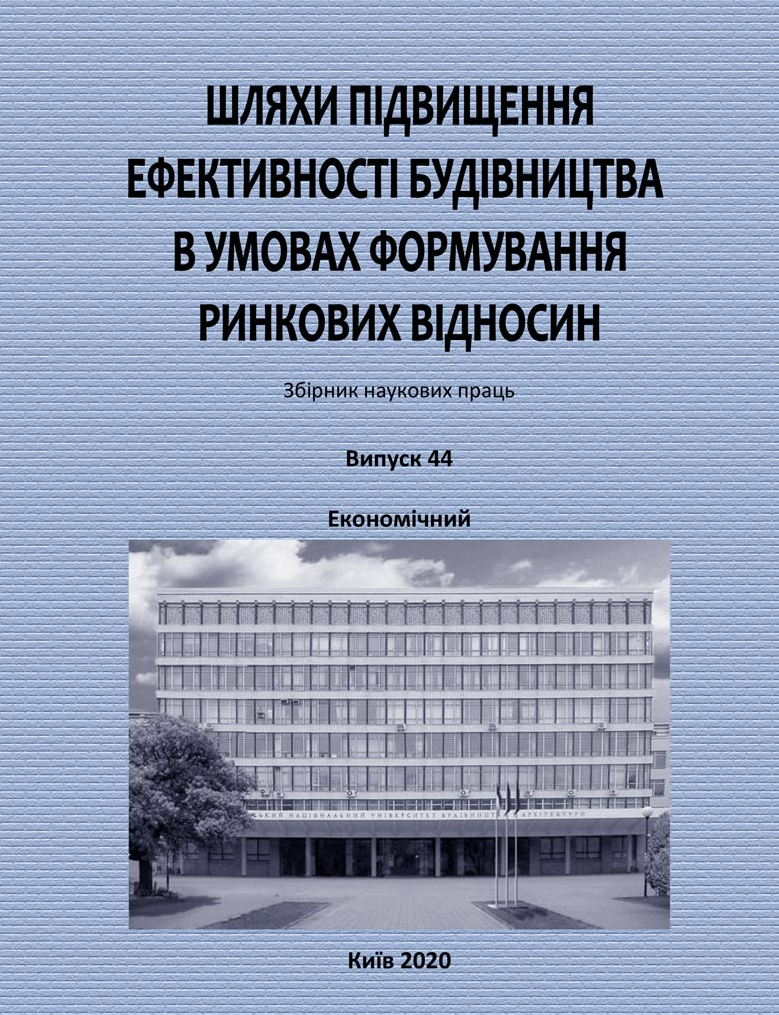Regressive model filling proekt desing to energy efficiency of building.
DOI:
https://doi.org/10.32347/2707-501x.2020.44.108-115Keywords:
energy efficiency classes, building energy efficiency standards, regression analysis, regression equation, determination coefficient.Abstract
Currently, the regulatory (compulsory) method of normalization in construction is used in Ukraine. Its essence lies in the elemental description of the construction object, according to which alternative design solutions are offered. In other words, building codes are transformed into rigid instructions. The parametric method of rationing involves the establishment of functional requirements, parameters, in particular, the energy efficiency parameters of individual structural solutions of a building. From many possible alternatives, the designer chooses the most effective solution, for example, on the criterion of energy efficiency. The parametric rationing method is based on a hierarchy of goals and objectives and is more progressive.
The purpose of the article is to substantiate the influence of engineering and design decisions on the energy efficiency of residential buildings by the method of correlation-regression analysis.
Using the methods of correlation (stochastic) analysis and the corresponding software product of the MS Excel environment, a regression model (equation) of dependence of the energy efficiency level of a residential building (B) on a set of engineering and technical design solutions was created. Specific energy consumption (ER) indicators for 27 projects of 4 - 9 storey residential buildings were considered as baseline data. The design solutions for each project were considered in the following areas: exterior wall and door structures, attic ceilings, translucent enclosure structures. of the given equation is only 11.6%, the coefficients of elasticity for each factor are calculated.
The regression equation obtained and the coefficients of regression and elasticity derived therefrom can be used in parametric normalization and in parametric pricing. Knowing the quantitative impact of each individual factor X and their totality on the resultant exponentials - the level of energy consumption B, one can purposefully focus on one or another factor. That is, to have a hierarchical, parametric series of influence of different design decisions on the energy efficiency index of a building.
References
Zakon Ukrainy «Pro enerhetychnu efektyvnist budivel». «Tsinoutvorennia u budivnytstvi». 2017. № 11, s.4 – 33.
DBN V.2.6-31.2016 “Teplova izoliatsiia budivel”. Rezhym dostupu: https://dbn.co.ua/load/normativy/dbn/1-1-0-13
DBN V.2.2-15:2019 «Zhytlovi budynky. Osnovni polozhennia». URL: http://www.minregion.gov.ua/wp-content/uploads/2019/08/IB_8-19.pdf
Rozrobka enerhetychnykh pasportiv budynku. Rezhym dostupu: https://www.nzeb.com.ua/ua/designing/developing/developing.html.
Minrehion proponuie buduvaty zhytlo z klasom efektyvnosti ne nyzhche S. URL :http://ecolog-ua.com/news/minregion-proponuye-buduvaty-zhytlo-z-klasom-energoefektyvnosti-ne-nyzhche-.
Mihrehionbud. Rezhym dostupu http://dergbud.org.ua/enerhoefektyvnist-budivelua.html.
DSTU EN 15459: 2017 Enerhoefektyvnist budivel. Protsedura ekonomichnoi otsinky enerhetychnykh system budivel. URL: http://online.budstandart.com/ua/catalog/doc-page.html?id_doc=76040
Iurii Brykailo. Parametrychnyi metod normuvannia u budivnytstvi. Rezhym dostupu https://dreamdim.ua/ru/parametrychnyj-metod-normuvannya-v-budivnytstvi/
Izmailova, K.V. (2019) Urakhuvannia klasu enerhoefektyvnosti zhytlovoi budivli u parametrychnomu tsinoutvorenni. Shliakhy pidvyshchennia efektyvnosti budivnytstva v umovakh formuvannia rynkovykh vidnosyn. 42. 19 –25.
Kulyk, T.R. & Kulyk, M.M. (2019). Perevahy ta nedoliky vvedenoho v diiu zakonu Ukrainy pro vnesennia zmin do zakonu Ukrainy "Pro budivelni normy" shchodo udoskonalennia normuvannia u budivnytstvi Shliakhy pidvyshchennia efektyvnosti budivnytstva v umovakh formuvannia rynkovykh vidnosyn, 41, 99 – 105.
Downloads
How to Cite
Issue
Section
License
Copyright (c) 2020 K. Izmailova

This work is licensed under a Creative Commons Attribution 4.0 International License.
Authors who publish with this journal agree to the following terms:
- Authors retain copyright and grant the journal right of first publication with the work simultaneously licensed under a Creative Commons Attribution License that allows others to share the work with an acknowledgement of the work's authorship and initial publication in this journal.
- Authors are able to enter into separate, additional contractual arrangements for the non-exclusive distribution of the journal's published version of the work (e.g., post it to an institutional repository or publish it in a book), with an acknowledgement of its initial publication in this journal.
- Authors are permitted and encouraged to post their work online (e.g., in institutional repositories or on their website) prior to and during the submission process, as it can lead to productive exchanges, as well as earlier and greater citation of published work (See The Effect of Open Access).

